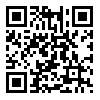Volume 6, Issue 2 (9-2017)
2017, 6(2): 17-29 |
Back to browse issues page
Download citation:
BibTeX | RIS | EndNote | Medlars | ProCite | Reference Manager | RefWorks
Send citation to:



BibTeX | RIS | EndNote | Medlars | ProCite | Reference Manager | RefWorks
Send citation to:
The effect of sodium silicate concentration on the microstructure and corrosion behavior of ceramic coating formed by plasma electrolytic oxidation method on the 5052 Al alloy. Iranian Journal of Ceramic Science & Engineering 2017; 6 (2) :17-29
URL: http://ijcse.ir/article-1-512-en.html
URL: http://ijcse.ir/article-1-512-en.html
Abstract: (4740 Views)
In this paper, the effect of sodium silicate concentration on microstructure and corrosion behavior of ceramic coating on 5052 Al alloy formed by plasma electrolytic oxidation (PEO) was studied. For this purpose, the electrolytes with 6, 12 and 18 g/l sodium silicate were used. The scanning electron microscope (SEM) was used for investigation of surface and cross section of coating. The phase analyzing of substrate and coated sample were conducted by X-ray diffraction pattern (XRD). Corrosion behavior of coated sample and substrate were investigated with electrochemical impedance spectroscopy (EIS) and potentiodynamic polarization test in 3.5 %wt. sodium chloride corrosive solution. With survey of SEM images was confirmed that, the coated sample with 12 g/l sodium silicate has most uniform and compact structure with finest pores size. Study of XRD pattern illustrated that there are α- Al2O3, γ- Al2O3, mullite (3Al2O3.2SiO2) and Mg2SiO4 phases in coating. Also, result of corrosion tests proved that the coated sample in 12 g/l sodium silicate has highest corrosion resistance. The corrosion resistance of this coated sample was 1588 KΩ.cm2 that was 188 times more than corrosion resistance of 5052 Al alloy substrate.
| Rights and permissions | |
 |
This work is licensed under a Creative Commons Attribution-NonCommercial 4.0 International License. |


